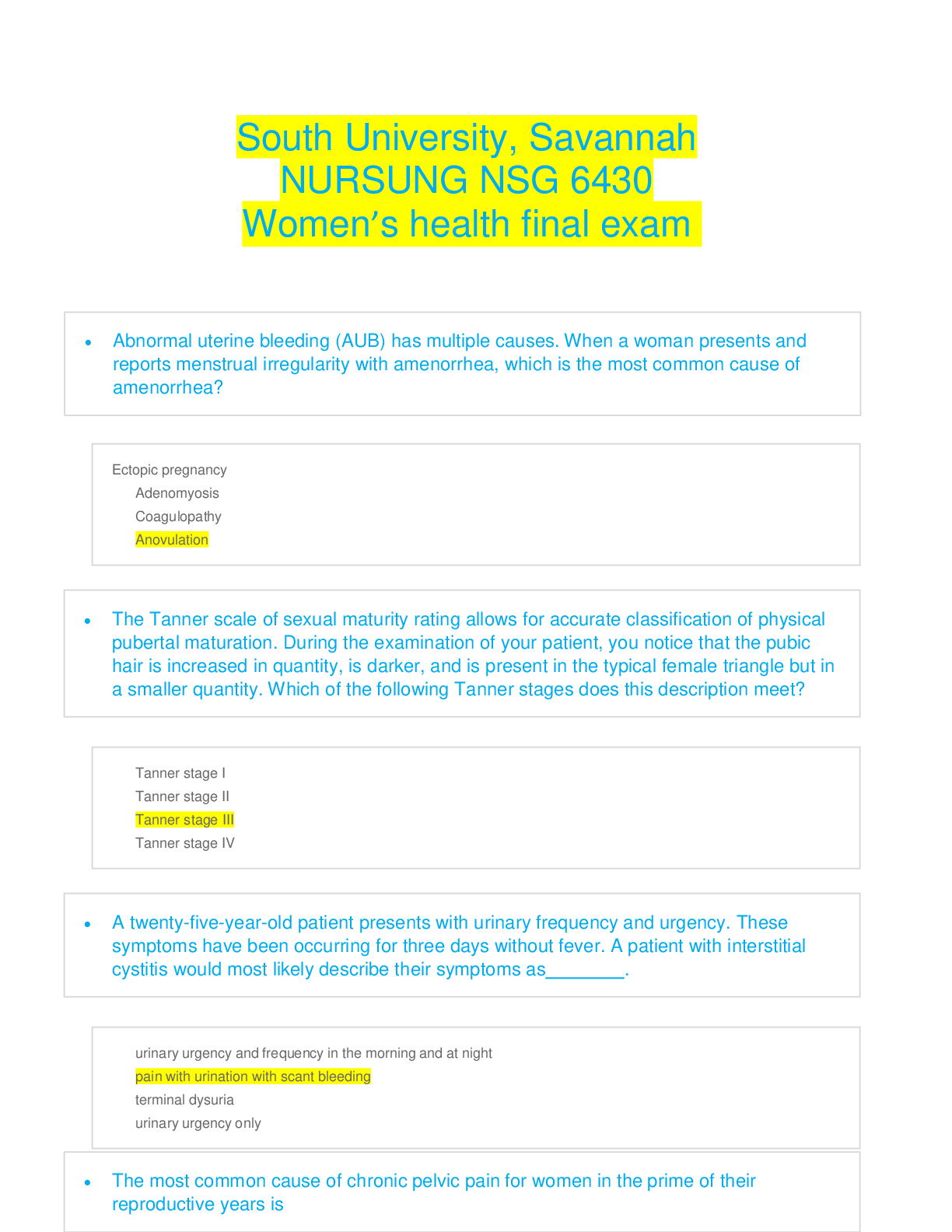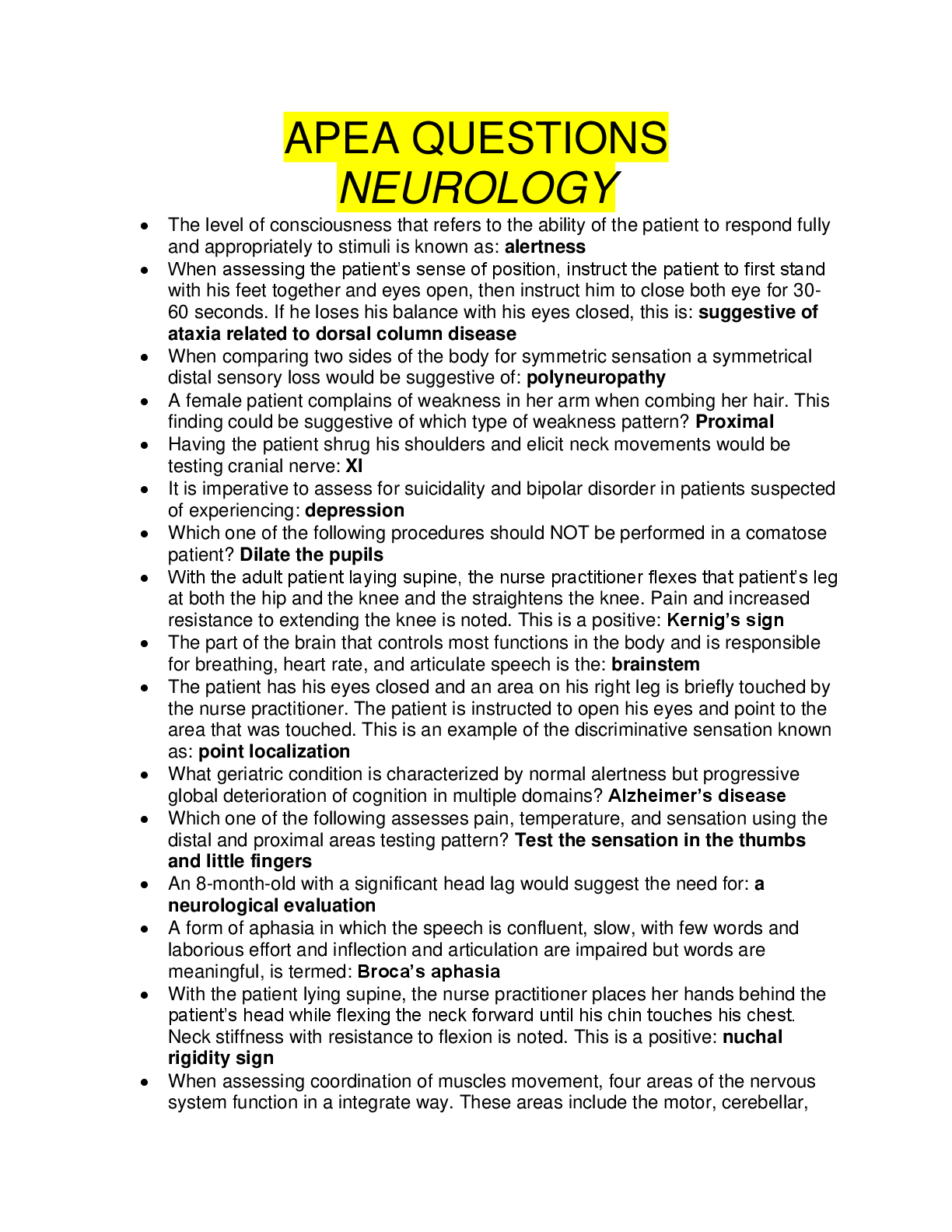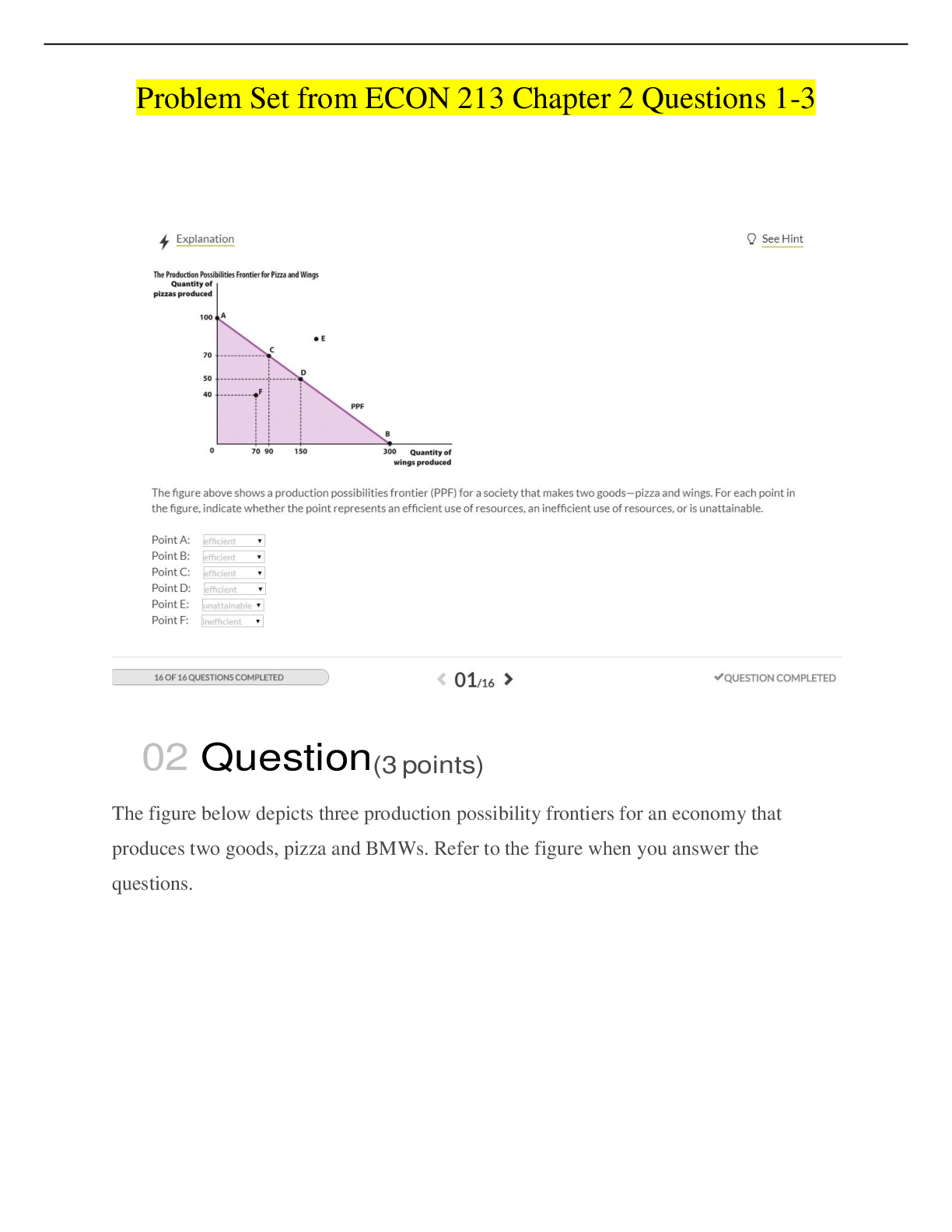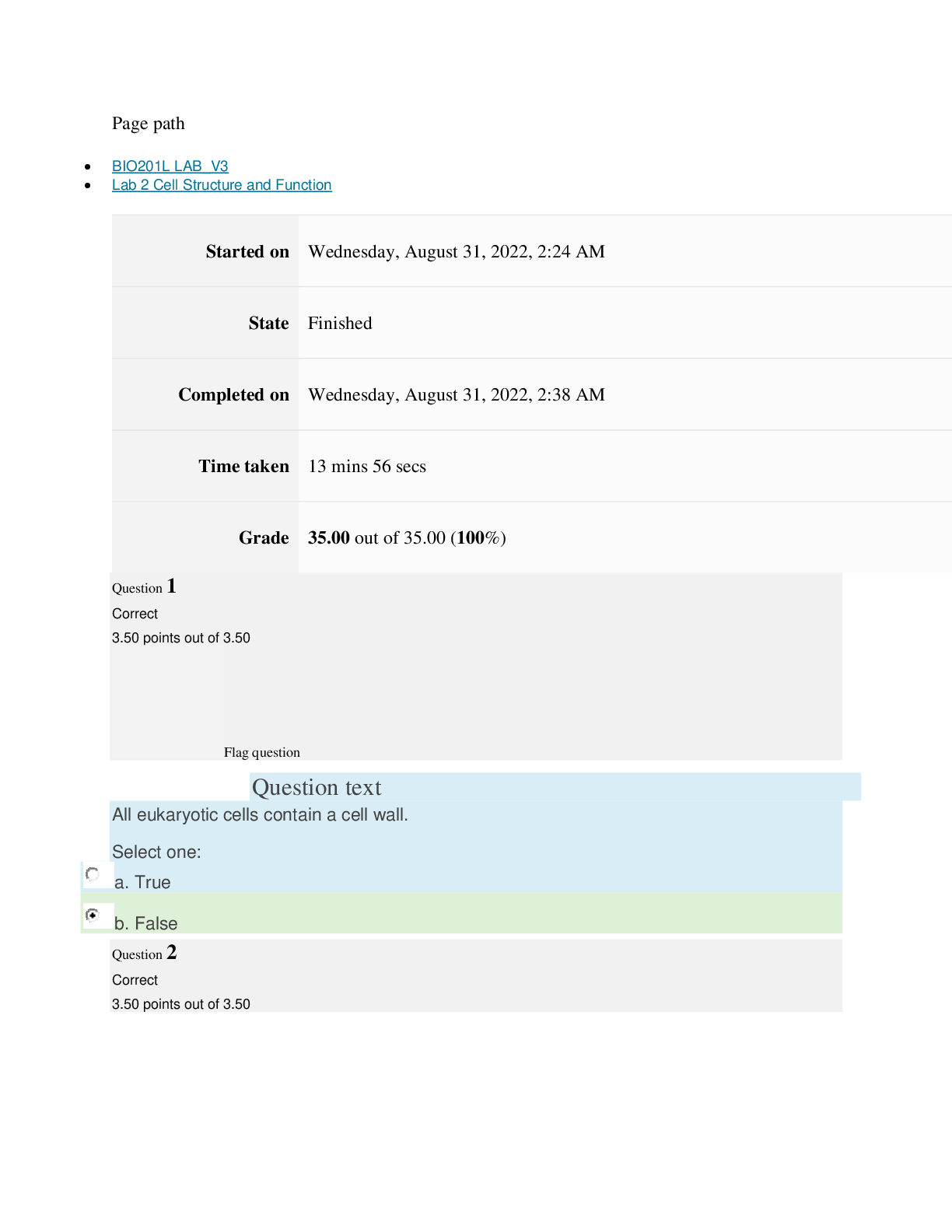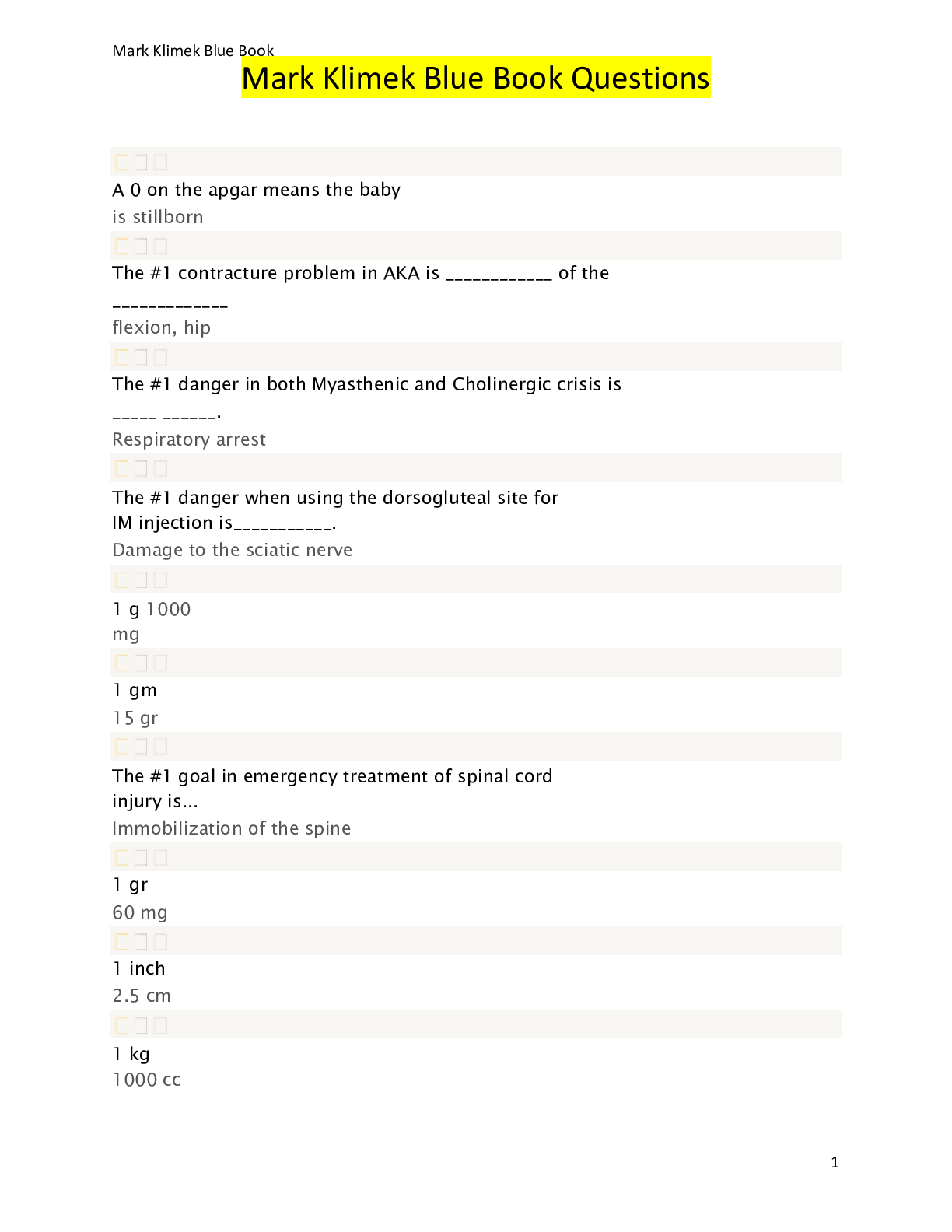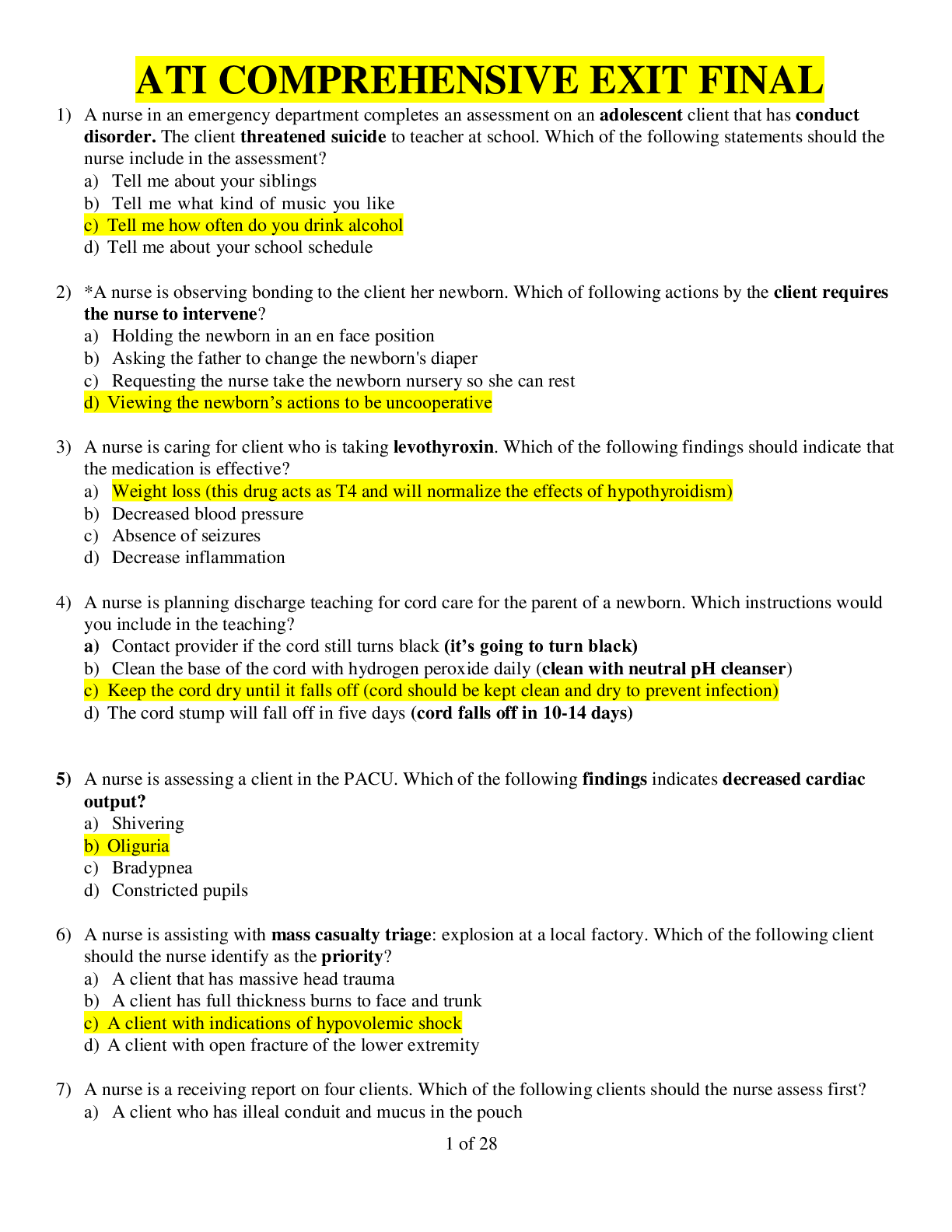*NURSING > QUESTIONS & ANSWERS > Chapter 34--Assessment of Neurological Function (All)
Chapter 34--Assessment of Neurological Function
Document Content and Description Below
Chapter 34--Assessment of Neurological Function MULTIPLE CHOICE 1. A client is scheduled for surgery to fuse the vertebra in the lumbar region of the spine. The nurse should instruct the client... that the number of vertebra being affected by this surgery would be: 1. 7. 2. 12. 3. 5. 4. 4. PTS: 1 DIF: Apply REF: Central Nervous System: Bones 2. A client has sustained a cerebral injury that is applying pressure to the corpus callosum. The nurse realizes that which of the following might occur with this client? 1. Temporary blindness 2. Temporary inability to talk 3. Temporary inability to walk 4. Temporary miscommunication between the sides of the brain PTS: 1 DIF: Analyze REF: Brain 3. A client is recovering from an injury to the frontal lobe of the brain. The nurse realizes that which of the following will be affected by this injury? 1. Higher intellectual functioning 2. Visual perception 3. Coordination 4. Respiratory rate PTS: 1 DIF: Analyze REF: Figure 34-6 The Lobes of the Brain 4. A client is recovering from a cerebral bleed which is placing pressure on the hypothalamus. Which of the following will the nurse most likely assess in this client? 1. Variations in body temperature 2. Blindness 3. Alteration in speech 4. Uncoordinated body movements PTS: 1 DIF: Apply REF: Diencephalon 5. A client recovering from a cerebral vascular accident is having difficulty remembering how to chew food. The nurse realizes that which of the following cranial nerves could be affected in this client? 1. IX 2. X 3. XI 4. V PTS: 1 DIF: Analyze REF: Table 34-2 Cranial Nerves 6. When utilizing the Glasgow Coma Scale during an assessment, the nurse identifies that the client is making incomprehensible sounds. This assessment finding would be included in which part of the assessment? 1. Eye opening 2. Verbal response 3. Best motor response 4. Mentation PTS: 1 DIF: Apply REF: Table 34-4 Glasgow Coma Scale 7. A client tells the nurse that at first she did not like to exercise but over time has grown to enjoy it and her body lets her know when she has not done enough. The nurse realizes that the client is experiencing which of the following neurological reactions to exercise? 1. Reduction in serotonin 2. Reduction in acetylcholine 3. Increase in endorphins 4. Reduction in dopamine PTS: 1 DIF: Analyze REF: Table 34-1 Neurotransmitters: Site and Action 8. Which of the following techniques should the nurse use to assess a client’s pupillary response to light? 1. Briefly shine a penlight into the client’s eye by passing the light from the outer edge of the eye toward the center of the eye. 2. Turn the room lights on and off quickly three times. 3. Have the client close his eyes and then quickly open them. 4. Shine the light in the center of the client’s eyes for one minute then check them for movement. PTS: 1 DIF: Apply REF: CN III: Oculomotor Nerve, CN IV: Trochlear Nerve, and CN VI: Abducens Nerve 9. After assessing a client’s plantar reflex, the nurse documents that the finding was normal. Which of the following did the nurse assess in this client? 1. Extension of the toes 2. Flexion of the toes 3. No movement of the toes 4. Spasming of the toes PTS: 1 DIF: Apply REF: Reflex Testing 10. A client is scheduled for a computed tomography scan of the brain. Which of the following should the nurse do in order to prepare this client for the diagnosed test? 1. Shave the client’s head. 2. Administer a sedative. 3. Check to see if the client is allergic to shellfish or iodine. 4. Immobilize the head before movement. PTS: 1 DIF: Apply REF: Computed Tomography: Nursing Management 11. A client is scheduled for a diagnostic test to assess the amount of electrical activity within each of the cerebral hemispheres. The nurse realizes that the diagnostic test this client will be having is a(n): 1. myelogram. 2. electroencephalogram. 3. transcranial Doppler sonogram. 4. electromyogram. PTS: 1 DIF: Analyze REF: Electrographic Studies 12. The nurse is assessing a client recovering from a carotid endarterectomy. Which of the following cranial nerves should the nurse include in this assessment? 1. CN V 2. CN VI 3. CN X 4. CN XII PTS: 1 DIF: Apply REF: CN XII: Hypoglossal Nerve 13. The nurse assessed a client’s deep tendon reflexes as being normal. Which of the following will the nurse document in the client’s medical record? 1. 4+ 2. 3+ 3. 2+ 4. 1+ PTS: 1 DIF: Apply REF: Table 34-7 Deep Tendon Reflex Rating Scale MULTIPLE RESPONSE 1. During an assessment, the nurse determines that a client is experiencing sympathetic responses. Which of the following did the nurse assess in this client? (Select all that apply.) 1. Decreased heart rate 2. Increased bowel sounds 3. Dilated pupils 4. Increased heart rate 5. Increased blood pressure 6. Increased respiratory rate PTS: 1 DIF: Analyze REF: Table 34-3 Sympathetic versus Parasympathetic Response 2. The nurse is planning to assess the visual acuity of a client. Which of the following tools can the nurse use to do this assessment? (Select all that apply.) 1. Snellen chart 2. Penlight 3. Cotton wisp 4. Rosenbaum pocket screener 5. Sharp object 6. Newspaper PTS: 1 DIF: Apply REF: CN II: Optic Nerve 3. A client is assessed as having a taste abnormality. Which of the following terms can the nurse use to describe this assessment finding during documentation? (Select all that apply.) 1. Diplopia 2. Ageusia 3. Hypogeusia 4. Dysgeusia 5. Dysphagia 6. Ataxia PTS: 1 DIF: Apply REF: CN VII: Facial Nerve 4. The nurse determines that a client is experiencing an alteration in sensory functioning when which of the following are assessed? (Select all that apply.) 1. Anesthesia 2. Hypesthesia 3. Parasthesia 4. Dysesthesia 5. Hypergesia 6. Ataxia PTS: 1 DIF: Analyze REF: Sensory Function 5. The nurse is reviewing the results for a client’s analysis of cerebrospinal fluid. Which of the following would be considered an abnormal finding? (Select all that apply.) 1. Opening pressure 40 mmHg 2. Cloudy 3. Elevated red blood cell count 4. Elevated white blood cell count 5. Glucose level 60 mg/dL 6. pH 7.35 PTS: 1 DIF: Analyze REF: Table 34-9 Cerebrospinal Fluid Analysis [Show More]
Last updated: 2 years ago
Preview 1 out of 6 pages
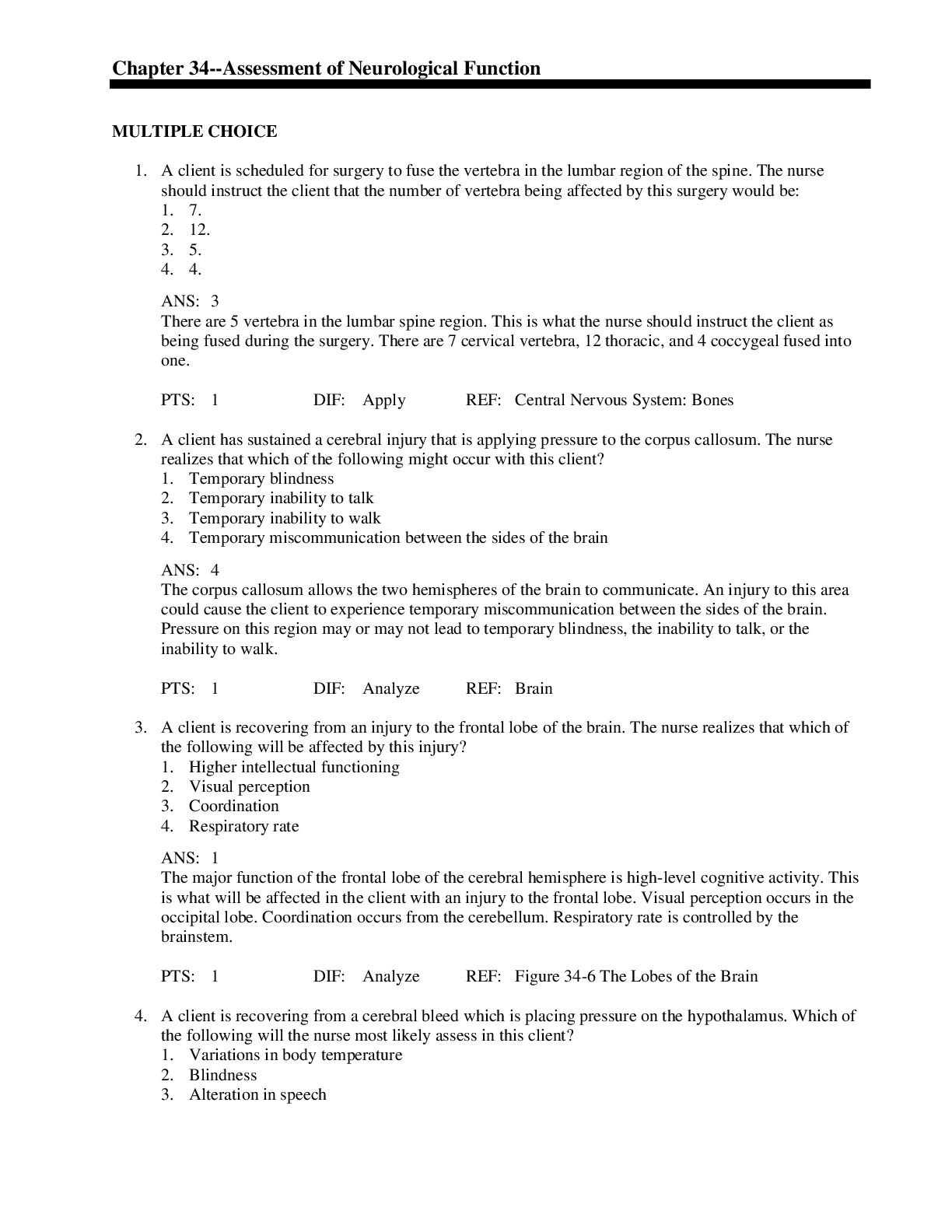
Buy this document to get the full access instantly
Instant Download Access after purchase
Buy NowInstant download
We Accept:

Reviews( 0 )
$3.00
Can't find what you want? Try our AI powered Search
Document information
Connected school, study & course
About the document
Uploaded On
Jan 28, 2020
Number of pages
6
Written in
Additional information
This document has been written for:
Uploaded
Jan 28, 2020
Downloads
0
Views
40

